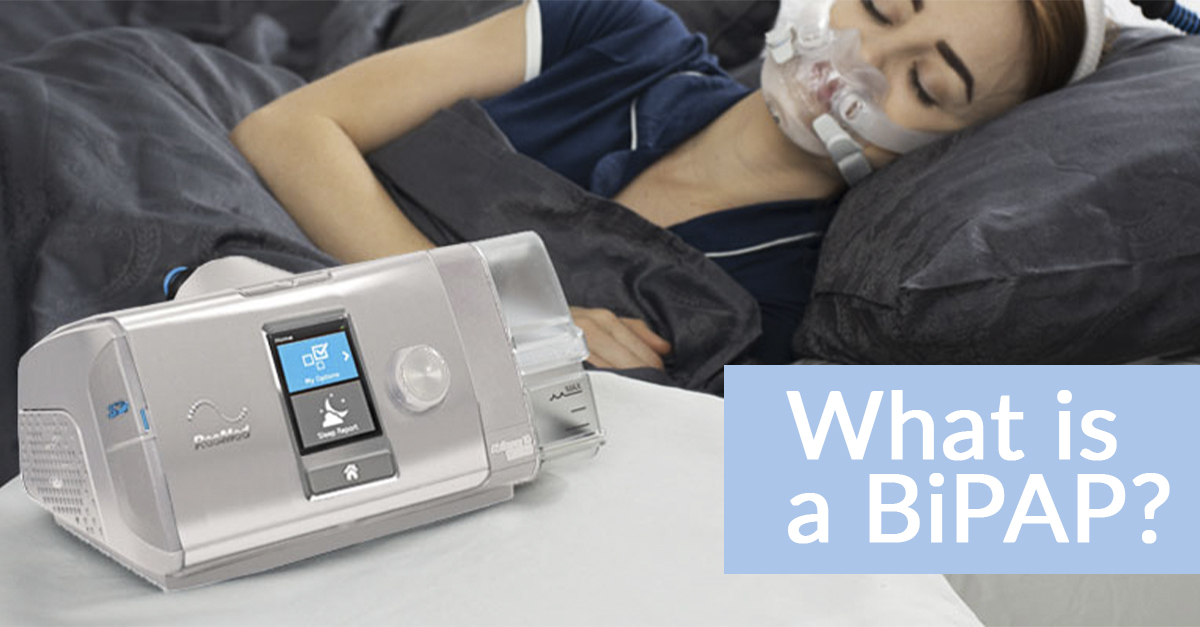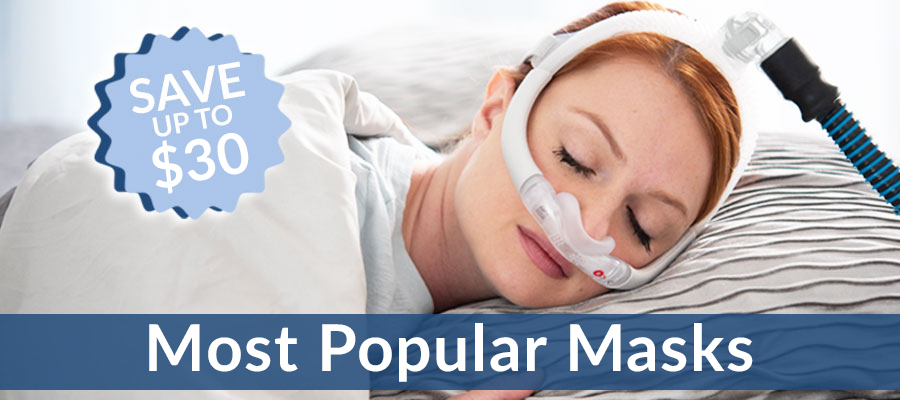
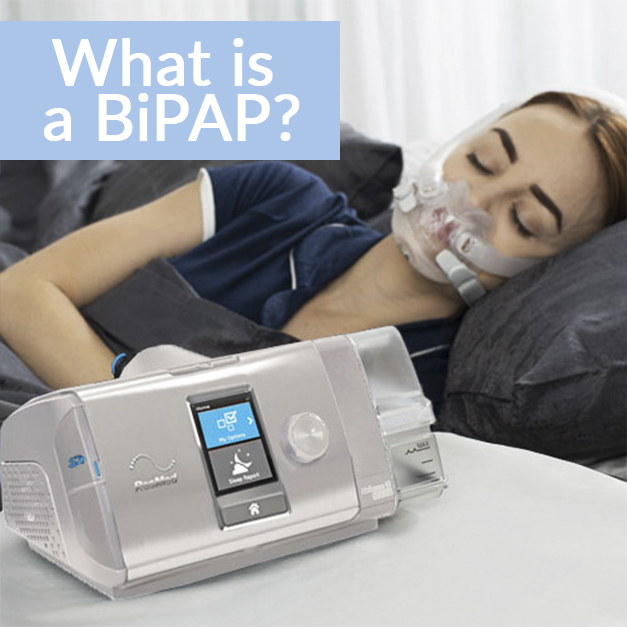
You’ve probably heard the word “BiPAP” – but what exactly is a BiPAP? How is it different than your regular CPAP? And how do you know if you should be using a BiPAP instead of a CPAP?
BiPAP, also known as a BiLevel, is shorthand for Bilevel Positive Airway Pressure, and BiPAPs are different from CPAPs in a few key ways. Typically, CPAPs are prescribed to treat sleep apnea. However, there are times when BiPAPs are prescribed instead. Let’s find out why.
Who should use a BiPAP?
BiPAPs are typically prescribed for more severe cases of sleep apnea or for patients who can’t tolerate a CPAP. Typically, people use BiPAPs when they:
- Need higher pressure therapy: When you have more severe sleep apnea, you may need a higher air pressure to treat your symptoms.
- Have trouble exhaling when using a CPAP: Often, people find higher pressures hard to exhale against – it can feel as if you have to force the air out of your lungs.
- Have not responded to regular CPAP therapy: The increased comfort and effectiveness of a BiPAP can work better for some people who have not had success with CPAPs.
BiPAPs help solve these problems with their unique features, setting them apart from your regular CPAP.
Comparing CPAPs and BiPAPs
What’s the difference between your CPAP and a BiPAP? There are two main BiPAP features that a regular CPAP simply cannot offer. Luckily enough, though, there is one key similarity between these two types of machines.
1. BiPAPs have higher pressure settings

 As previously mentioned, more severe cases of sleep apnea often require higher pressure levels to treat symptoms and achieve the perfect night’s sleep.
As previously mentioned, more severe cases of sleep apnea often require higher pressure levels to treat symptoms and achieve the perfect night’s sleep.
While a CPAP’s highest pressure setting is 20cm H2O, BiPAPs can achieve pressures as high as 24cm H2O. The 20cm H2O pressure setting is simply not high enough for some, so regular CPAP therapy is not effective. BiPAPs can help people that CPAPs cannot because it is capable of delivering those higher pressures.
2. BiPAPs have two different pressure settings, one for inhale and one for exhale
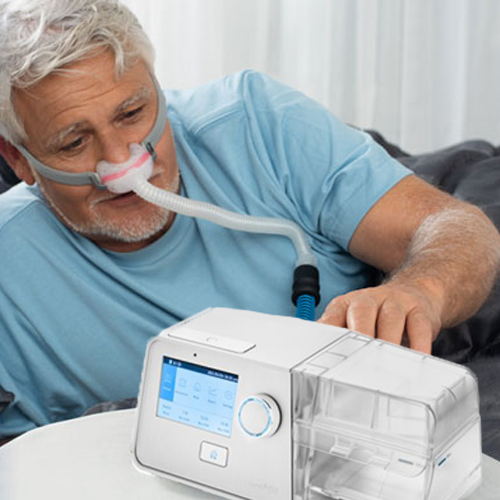
 Many people experience difficulty breathing out against the pressure of their CPAP. Especially for people with higher pressure settings, it can require a lot of effort to force the air out of your lungs. Luckily, BiPAPs have two pressures, one for the inhale and one for the exhale. The exhale pressure is lower than the inhale pressure, making it easier to breathe out.
Many people experience difficulty breathing out against the pressure of their CPAP. Especially for people with higher pressure settings, it can require a lot of effort to force the air out of your lungs. Luckily, BiPAPs have two pressures, one for the inhale and one for the exhale. The exhale pressure is lower than the inhale pressure, making it easier to breathe out.
Many CPAPs have a feature called Expiratory Pressure Relief, or EPR, that allows you to lower your exhale pressure. However, EPR only allows for a 3cm H2O difference between your two pressures. BiPAPs offer a much larger pressure difference!
3. Both machines use the same supplies

 Good news! You can use the same supplies with both CPAPs and BiPAPs. We know it can be confusing because almost all masks are labeled “CPAP masks,” but don’t be afraid to try them with your BiPAP.
Good news! You can use the same supplies with both CPAPs and BiPAPs. We know it can be confusing because almost all masks are labeled “CPAP masks,” but don’t be afraid to try them with your BiPAP.
For people transitioning from using a regular CPAP to using a BiPAP, this can be a huge relief. You can continue to use your favorite mask with your new machine! Full face masks are generally recommended for new BiPAP users, because the higher pressures often force users’ mouths open on nasal masks. However, with a good chinstrap or some adjustment time, nasal and nasal pillow masks are fully compatible as well.
Do you need to upgrade your machine?
If you’d like to try a BiPAP, we recommend talking to your doctor about the benefits of switching to a BiPAP. If necessary, you may want to consider our CPAP Prescription Program or “CPAPRx”. Don’t worry, it applies to BiPAPs, too! Because of the increased functionality, some consider BiPAPs a luxury version of a CPAP. When looking into these machines, our CPAPRx offer will let you upgrade without hassle or long waits.
Don’t need a BiPAP?
Another great option for increased comfort and effectiveness is upgrading to an Auto-titrating CPAP machine. These machines automatically customize your CPAP therapy so that you get the most comfortable and effective therapy tailored specifically to your needs. Plus, you will not need to take another sleep test in order to upgrade. Click below to learn more about Auto-titrating CPAP machines – and see an offer on our best Auto CPAP!
Our Best BiPAP: AirCurve 10 VAuto
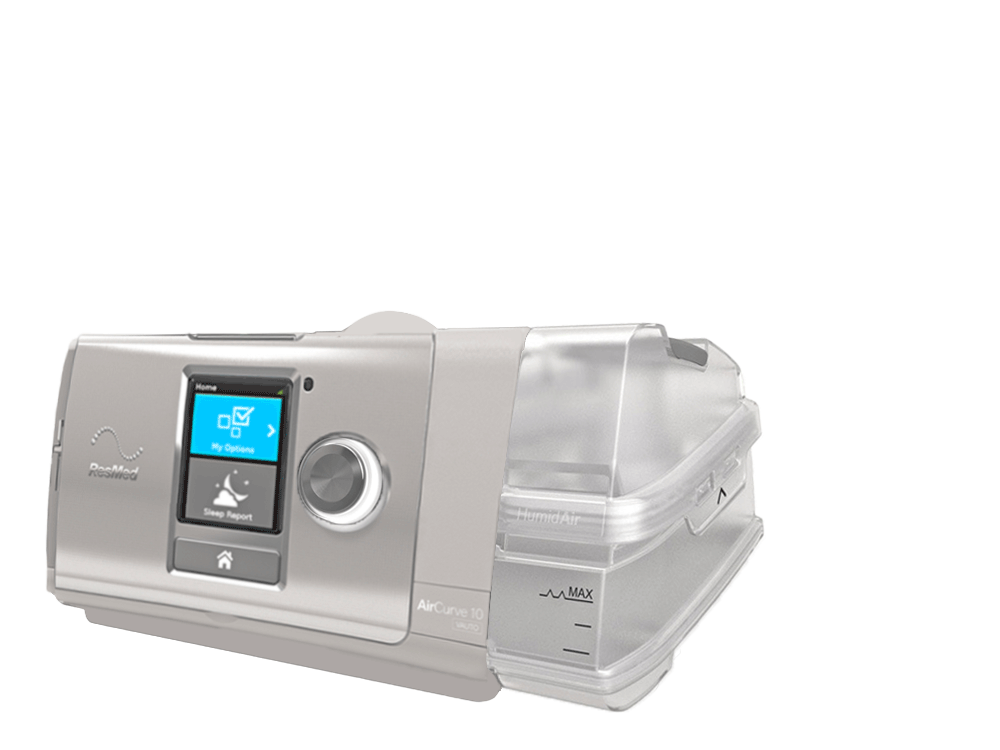
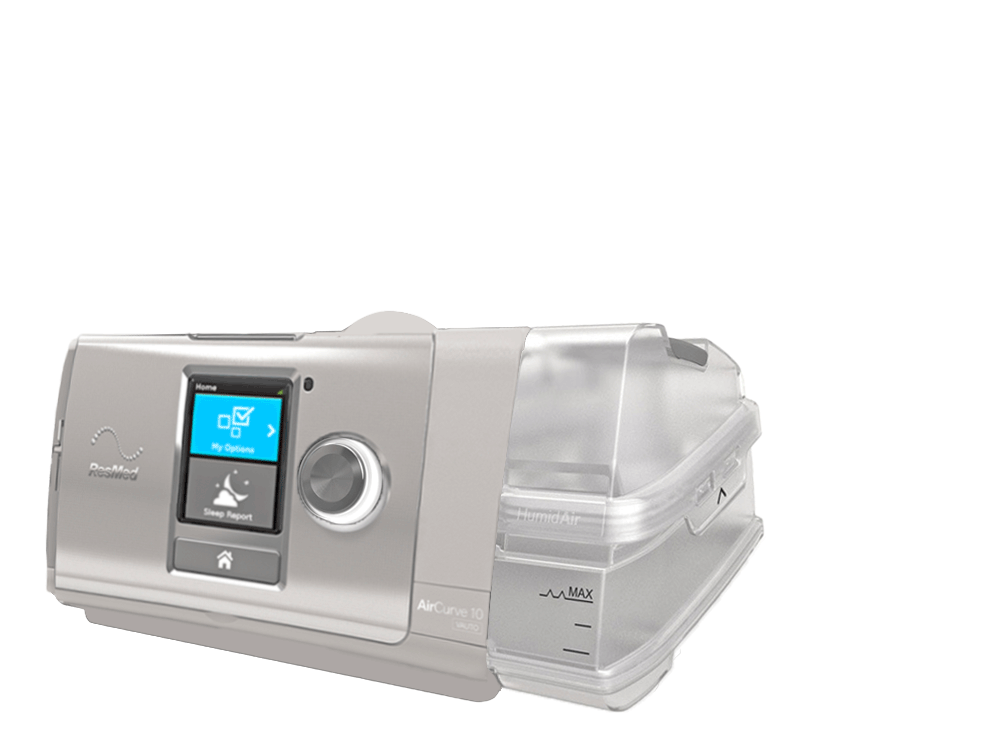
The AirCurve 10 VAuto combines the most advanced technology and the latest comfort settings. It is easy to use and ensures that you get the best night’s sleep possible.
But it doesn't stop there -- it goes above and beyond.
The AirCurve has even more advanced comfort features. With 7 levels of humidity and an optional heated tube, you will never dry out again. No matter what pressure you need, the AirCurve will keep you irritation-free and make breathing easy.
Get your new AirCurve 10 VAuto for just $399 today! Now getting a new BiPAP is easier and more affordable than ever with our 0% interest Easy Payment Plans. Buy now, pay later, and have your AirCurve 10 shipped out right away.
Your new machine could be covered by your insurance! Allow us to check with your provider for you to find out what is covered (for free!). Click below to get started:



